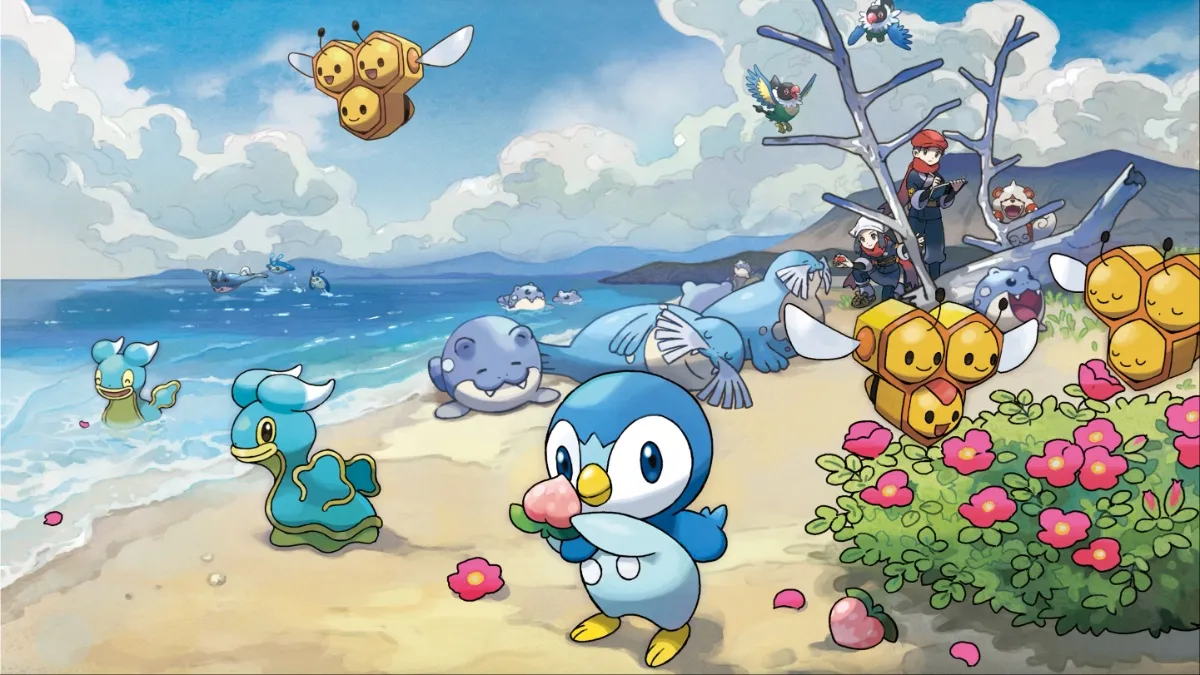As Link, I see a stable in the distance. When I arrive, one of the stablehands mentions a tightly localized hurricane in the sky that hasn’t stopped for weeks. I head outside, look up to the sky, and wonder how I’m going to get inside the roaring winds.
In most open-world games, there’s a monotony that sets in after its opening hours. Each area is filled with activities marked on your map, and once you’ve experienced each different type, you become a janitor, sweeping each repetitive task off the table and into the bin. Sometimes these tasks are fun or have some variety within them, but the way they are organized is transparently repetitive.
The Legend of Zelda: Tears of the Kingdom didn’t become monotonous for me. There are repetitive tasks, like Korok seed puzzles, which tend to be variants of the same few things, but they rarely get tedious. For one, they’re not marked on the minimap, so it’s harder to ruin the game for yourself by turning the map into a connect-the-dots puzzle. But a deeper reason I think Tears of the Kingdom keeps my attention is the way it uses mysteries.
Breath of the Wild and Tears of the Kingdom both use mountains to obscure your view and tall places to focus your exploration. When you look around the distance from ground level, you probably see a Skyview Tower, a stable, and maybe an enemy outpost or interesting piece of terrain, and Tears of the Kingdom makes sure that most of your options contain or lead to some sort of mystery.
When you arrive at a stable, the NPCs will offer hints about interesting events or places in the area, or they’ll even directly give you a quest. Most of the Skyview Towers feature a bit of exploring or puzzling in order to gain access to them, and interesting pieces of terrain often feature a Korok seed, a new vantage point where you can find more interesting areas to head towards, or even an NPC with a hint.

This all feeds into a cycle where you’re not only getting distracted by seeing cool things in the distance, but when you arrive, you’re given something exciting — another mystery to solve. Many of these mysteries are small and are maybe better described as cool things to stumble across. But sometimes, these hints will lead to entire dungeons you didn’t know existed, a detailed quest, a cool treasure, or a fun minigame, and you can only know by going there and investigating.
The brilliance of this is that it makes the open world more exciting. NPCs will mention that a location exists but that they don’t know exactly where it is. And now you know that’s out there, and you kind of wanna find it. You’re no longer just walking aimlessly across an admittedly beautiful open world; you’re searching for something cool.
A big reason I find myself playing Tears of the Kingdom late into the night is because I keep finding mysteries, and I want to know the solution. I’m not thinking about ticking off another map marker and getting closer to completing this area — I’m wondering what’s inside the hurricane. And then on my way to the hurricane, I see a weirdly shaped island and wonder why it’s shaped like that. And then I fall off the island and see a statue pointing to something. But what’s it pointing at?
This series of mysteries is heightened by the Adventure Log menu. Many of the larger mysteries you find will be added to your Side Quests or Side Adventures tabs. Some of these are just regular quests, but others are vague and just tell you the general area you got the hint from and what it was. On the other hand, there are sometimes things that seem like they should be in your Adventure Log as quests, but they aren’t, like helping teach the Gerudo flirting class. The game isn’t tracking everything and giving you an interminable list of objective markers to follow — it’s letting your curiosity lead you.

Plenty of other open-world games do this to some extent. The most obvious example is Elden Ring, which made sure pretty much any place that looked interesting had a cool piece of loot or a threatening enemy. But outside of that, a lot of big-budget open-world games are focused on linear mission design and side missions that ultimately get repetitive.
It’s completely possible for you to miss really cool stuff in Tears of the Kingdom. But the designers do want you to find it. NPCs in different locations will mention the same places and events, most of the large pieces of content are near high places or places that you’ll probably visit like towns and Skyview Towers, and color and movement draw your eye to things you could otherwise miss.
What makes The Legend of Zelda: Tears of the Kingdom special is that it lets you explore on your own whims, and then it packs anywhere your whims could take you with mysteries to uncover. Not every game should be like Tears of the Kingdom, but playing it, I felt a sense of curiosity and wonder that open-world games often fail to evoke.
I want open-world games’ worlds to feel like more than mission selectors, and Zelda’s mysteries are a great way to do that.





